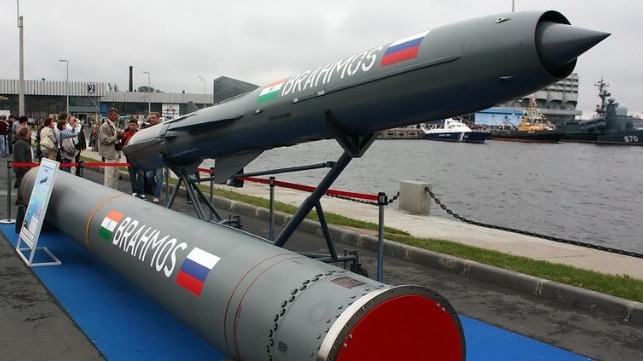Opinion: BrahMos Missile System Increases the Philippines' Deterrence

[By Erick Nielson C. Javier]
At the end of last year, the Philippines released initial funding for the purchase of the Indian–Russian BrahMos missile system. The contract for three batteries to be operated by the Philippine Marine Corps was signed by Secretary of National Defense Delfin Lorenzana in January, with delivery of the first systems expected in 2023.
The director of the Asia Maritime Transparency Initiative, Gregory Poling, called it the ‘most strategic purchase the AFP [Armed Forces of the Philippines] has made in years’.
The Philippines has long desired to procure land-based missiles as part of its military modernization program. While previous efforts failed due to ‘changed priorities’, the need for these weapons was catalysed by increasing Chinese aggressive actions in the West Philippine Sea; the most recent was the harassment of Philippine resupply efforts to Ayungin (Second Thomas) Shoal in November.
BrahMos is an impressive weapon, known as one of the world’s fastest (supersonic, not hypersonic) cruise missiles. Its deployment could allow the Philippines to enact its own version of an anti-access/area denial strategy.
However, it would be premature to say that BrahMos by itself is a gamechanger. Due to restrictions under the Missile Technology Control Regime (to which India is a signatory), BrahMos missiles supplied to the Philippines will be limited to a range of 290 kilometres (156 nautical miles). While such range is a first for the Philippines, it isn’t enough to cover the full 370 kilometres (200 nautical miles) of the Philippines’ exclusive economic zone. Being stuck on land-based launchers in an archipelago also limits the system’s strategic mobility.
Even at its export-limited range, BrahMos must be supported by an effective intelligence, surveillance, target-acquisition and reconnaissance (ISTAR) system to find and track targets, and a resilient command and control (C2) complex to ensure that command can use it. The AFP’s C2ISTAR system is hobbled by a still-developing C2 complex and limited numbers of vulnerable crewed observation aircraft and drones. Even if it were fully operational, a C2ISTAR complex could be disrupted; in the event of war, an adversary would do its utmost to disrupt and destroy the Philippines’ C2ISTAR capabilities. Maintaining BrahMos’s deterrent capability will require not only building this complex but ensuring that it can withstand any attempts to degrade it in battle.
Neither does possessing a robust C2ISTAR complex combined with BrahMos suffice for establishing reliable deterrence. Effectively deterring an adversary requires material capability to inflict ‘unacceptable damage’ and the political will to fight. The former leads to questions of risk calculus and damage tolerance; the latter requires willpower and understanding the consequences of the use of weapons.
Although such analyses are usually done in the context of nuclear deterrence, these concerns are also relevant for conventional deterrence. In the Philippines’ case, conventional deterrence may well depend on the ability of the AFP to dissuade a possible fait accompli, specifically by the People’s Liberation Army, over some or all the Philippine-held features in the Kalayaan Island Group (Spratly Islands).
While China has yet to directly comment on the Philippines’ plans, Chinese Foreign Minister Wang Yi, in a forum on Philippines–China relations held shortly after the announcement, promised that China ‘will not use its strength to bully smaller countries’. China also pushed through with a donation of assorted non-offensive materiel worth US$19.5 million to the AFP.
Perhaps China feels that it need not consider Philippine BrahMos in its equations. As the largest plans of the AFP modernization program call for five batteries, saying that that’s not enough is an understatement when considering the scale of the potential opposition.
Still, an AFP with BrahMos is better than an AFP without it, because it increases its chances of defending the country from external aggressors. This and other efforts to strengthen Philippine defense—including maintaining alliances and partnerships with like-minded countries—should, to paraphrase Poling, keep coercion at the grey-zone level instead of open warfare.
The Philippine defense establishment needs to do more beyond just purchase new weapons. The AFP needs to integrate BrahMos and other new capabilities into its operations, through wargaming and enhanced training.
The Philippines must continue to develop and enhance its ideas and strategy for achieving its deterrence objectives. Tools like the US net assessment method, if appropriately adapted and updated to suit the Philippines’ particular needs, contexts and situation, may be useful. It is imperative as well to study Chinese strategic culture and assess the damage tolerance threshold of the Chinese Communist Party.
The road ahead for the Philippines is challenging given its own complicated and inward-looking strategic culture. But for the country to make the most of its new purchases and safeguard its sovereignty, the Philippines must evolve its deterrence and strategic thinking now, while there’s still time.
Erick Nielson C. Javier is a defense research officer at the National Defense College of the Philippines. He previously spent five years with the Armed Forces of the Philippines’ Office of Strategic Studies and Strategy Management. The views expressed in this article are his alone and do not represent the views of the National Defense College of the Philippines, the Department of National Defense, the Armed Forces of the Philippines or the Philippine government.
This article appears courtesy of The Strategist and may be found in its original form here.
Top image: BrahMos missile (Vasilyev Serge / CC BY 2.0)
The opinions expressed herein are the author's and not necessarily those of The Maritime Executive.

